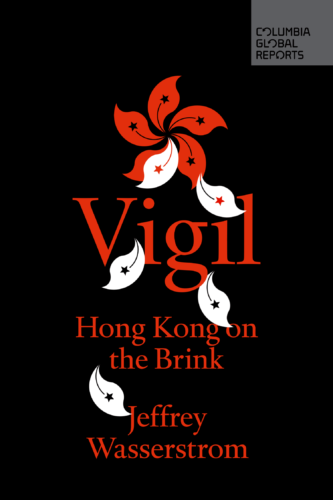Vigil: Hong Kong on the Brink
- By Jeffrey Wasserstrom
- Columbia Global Reports
- 112 pp.
- Reviewed by AA Bastian
- February 14, 2020
A short yet brave look at the human dimensions of an evolving East-West drama.

Every time we saw a report on Hong Kong in the last few months, it was missing something: a deep comparison with the past and an acknowledgement of the region’s long trajectory toward protest. Jeffrey Wasserstrom fills that gap with this fast read.
The author is an advisor to the Hong Kong International Literary Festival, former member of the board of directors of the National Committee on U.S.-China Relations, and chancellor’s professor of history at the University of California, Irvine. You are in good hands in Vigil.
Many scholars shy away from writing about the movements in Hong Kong, as their careers depend on access to mainland China, whose government opposes the protests. Wasserstrom bravely but respectfully enters the fray, illuminating the human dimension of an evolving East-West drama in clear, direct, accessible prose.
He writes from a wealth of contacts with Hong Kong, having lectured on its campuses and attended its vigil of the June 4, 1989, Tiananmen Square massacre, returning to the city many times over the years. Highlights in Vigil include the author’s personal conversations with two generations of protest leaders, resistance writers, and Hong Kong’s last British governor. Each story illustrates not only the dynamics of the movement, but also its key players’ humanity.
Joshua Wong is among the youngest generation of protest leaders who has seen, more than once, the inside of Hong Kong’s jails. Writes Wasserstrom: “I saw Wong standing off to the side by himself…He was genuinely heartened by any sign that people outside of his city still cared.”
While researching the book, says Wasserstrom:
“I looked intently for signs of further erosion of Hong Kong’s distinctiveness from mainland cities — and always found them. I also looked for signs that…the territory remained very different from the cities just across the border on the mainland — and I always found those, too.”
This slim volume will leave you with central points to consider, and also prompts you to ask more questions. Wasserstrom dips lightly into historical comparisons, always pointing out the fallacy that past events will lead to similar actions in the future. “History does not repeat itself,” he reiterates.
A few sentences early on in Vigil are hard to follow, but this is understandable for a book written on so short a timeline. And the end leaves you hanging, as it should — the crisis is ongoing — though the author might have provided a more bold sense of where we may be headed. Again, given the potential consequences of chronicling the region at all, his reticence is reasonable.
Wasserstrom’s book is the latest in a string of write-ups about Hong Kong. Antony Dapiran’s City of Protest: A Recent History of Dissent in Hong Kong, published in 2017, is a notable attempt to capture the spirit of the movement in a readable narrative. Ming-sho Ho, taking a more scholastic approach, published Challenging Beijing’s Mandate of Heaven: Taiwan’s Sunflower Movement and Hong Kong’s Umbrella Movement in early 2019, before last summer’s protests.
Vigil, thus, becomes the most recent attempt by a seasoned scholar to turn the complex historical and human dynamics surrounding the Hong Kong protests into a relatable story. An important work, it mostly succeeds in its mission to quickly educate readers about an unsettled situation. Doubtless, this book won’t be the last on the subject.
[Editor's note: Jeffrey Wasserstrom will be in conversation with Ishaan Tharoor at Politics and Prose in Washington, DC, on Sun., Feb. 16, at 3 p.m. Click here for info.]
AA Bastian published on a new source for the Second Anglo-Burmese War in “The Journal of Burma Studies,” “The Other Bayonet: A New Source to Frame the Second Anglo-Burmese War.” She’s currently working on a history of a Mormon missionary, using a new source, in India, Southeast Asia, and Hong Kong between 1853-1855. Find her on Twitter at @AABastianWrites.

